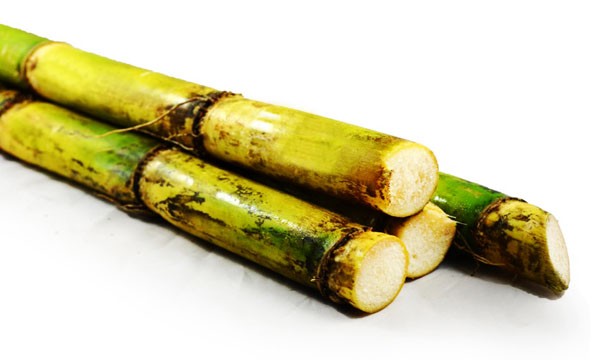Sugar and Cane: A Guide to Their Nutritional Benefits and Uses
Just How Walking Stick Sugar Processing Chemicals Improve Sugar High Quality and Return
The role of handling chemicals in walking stick sugar production is critical, as they directly affect both the top quality and yield of the final product. The unification of turned on carbon and enzymes serves to optimize the failure of complex sugars, inevitably leading to a purer and higher-quality sugar.
Introduction of Cane Sugar Handling
Cane sugar processing entails a series of vital actions that transform raw sugarcane into polished sugar products. The process starts with harvesting, where mature sugarcane stalks are reduced and transferred to refining centers. Upon arrival, the walking stick undertakes washing to get rid of pollutants such as soil and plant materials.
Complying with washing, the walking cane is crushed to draw out the juice, which includes sucrose - sugar and cane. This juice undergoes clarification, where lime and warm are made use of to remove continuing to be impurities and non-sugar elements. The cleared up juice is then vaporized to concentrate the sugar web content, leading to the development of thick syrup
Next, the syrup is crystallized with a controlled air conditioning procedure, resulting in sugar crystals. To achieve refined sugar, additional purification actions are used, including washing, re-crystallization, and drying out.
The end product is either packaged as raw sugar or additionally refined into white sugar, catering to different consumer and industrial requirements. This comprehensive series of actions guarantees the production of top quality sugar, crucial for many applications in food and beverage markets.
Trick Processing Chemicals Used
The production of polished walking stick sugar relies upon different handling chemicals that play significant functions at various phases. Among the most important are lime (calcium hydroxide), phosphoric acid, and sulfur dioxide. Lime is primarily made use of throughout the explanation stage to neutralize level of acidity and speed up contaminations, leading to a more clear juice. This action is vital for enhancing the general high quality of the removed juice.
Phosphoric acid offers a double purpose; it improves the information procedure and aids in the removal of color-forming substances, adding to a higher purity of the last product. In addition, sulfur dioxide works as a whitening representative, allowing for the reliable removal of unwanted pigments and improving the shade of the sugar.
Various other notable chemicals consist of triggered carbon, which is utilized for additional decolorization, and enzymes that assist in the malfunction of complicated sugars into simpler kinds, thus boosting yield. The cautious option and application of these processing chemicals are critical for optimizing the performance of sugar extraction and refining processes, ultimately leading to a more regular and higher high quality sugar product.

Influence on Sugar High Quality
How do processing chemicals influence the high quality of refined sugar? The introduction of different chemicals in the walking stick sugar handling phase considerably enhances the purity and total top quality of the final product. Trick representatives, such as phosphoric acid and calcium hydroxide, promote the explanation process, properly eliminating contaminations and colorants that can negatively affect sugar's appearance and preference. By neutralizing unwanted parts, these chemicals help achieve a greater degree of decolorization, causing a much more aesthetically enticing and marketable item.
Additionally, making use of triggered carbon and ion-exchange materials throughout the refining process plays a crucial duty in removing off-flavors and undesirable smells, adding to the sugar's sensory account. This improvement not only elevates the visual and organoleptic top qualities however likewise boosts the life span by reducing microbial activity connected with impurities.
Furthermore, the exact application of these chemicals ensures that the sugar shows a constant grain size and flowability, which are necessary characteristics for both industrial applications and customer choices. Overall, the strategic use processing chemicals is essential in accomplishing top quality refined sugar that satisfies industry standards and consumer expectations.

Enhancing Return Efficiency
Enhancing return performance in cane sugar handling includes maximizing various stages of production to make best use of the amount of sugar removed from raw cane. One essential aspect is the choice and application of appropriate processing chemicals, which can assist in the malfunction of cell wall surfaces and More hints boost sugar release throughout removal. Chemicals such as acids and enzymes play an essential duty in this process by hydrolyzing polysaccharides and liquifying impurities, thus improving the overall removal effectiveness.

Regular monitoring and modification of handling parameters are necessary to maintain performance throughout production (sugar and cane). By employing these methods, sugar producers can not only enhance the amount of sugar gotten but also minimize waste and lower manufacturing prices, adding to a more sustainable and successful sugar handling operation
Benefits for Consumers and manufacturers
Walking cane sugar processing chemicals use substantial advantages for both producers and customers, creating a much more sustainable and efficient sector. For producers, these chemicals boost removal procedures, leading to greater yields and boosted sugar top quality.
The enhanced quality of sugar translates to better preference and consistency in food products. Furthermore, the use of processing chemicals can lead to a more secure supply of sugar, minimizing scarcities and rate spikes that can occur due to ecological variables or market variations.
Conclusion

The role of handling chemicals in cane sugar production is pivotal, as they straight affect both the quality and yield of the last product (sugar and cane). The unification of triggered carbon and enzymes offers to optimize the breakdown of intricate sugars, inevitably leading to a purer and higher-quality sugar.Walking cane sugar handling entails a collection of important steps that change raw sugarcane into polished sugar items.Enhancing yield performance in cane sugar processing involves enhancing various phases of production to maximize the amount of sugar drawn out from raw walking cane.Walking cane sugar processing chemicals play a critical function in improving both sugar quality and yield